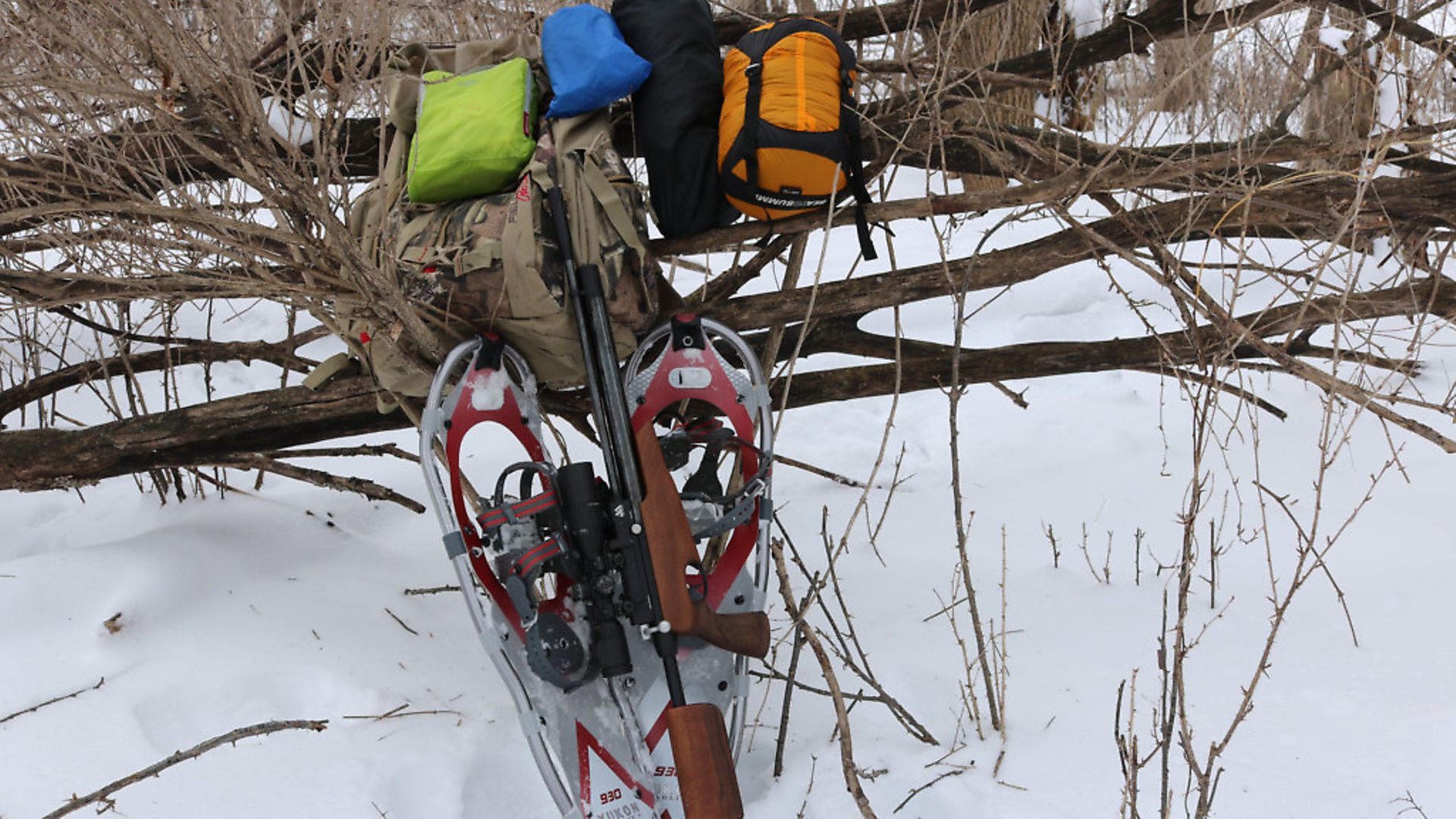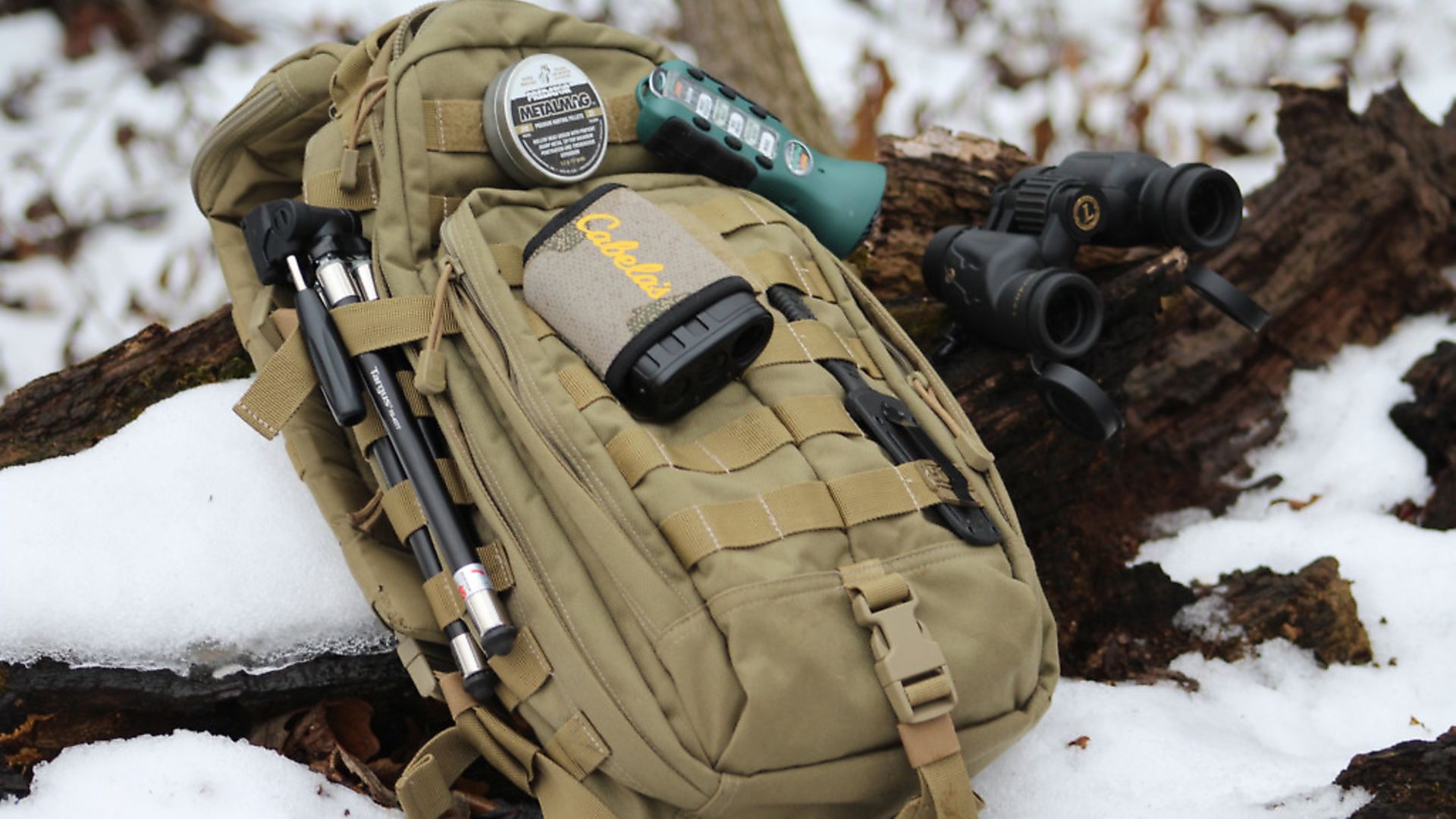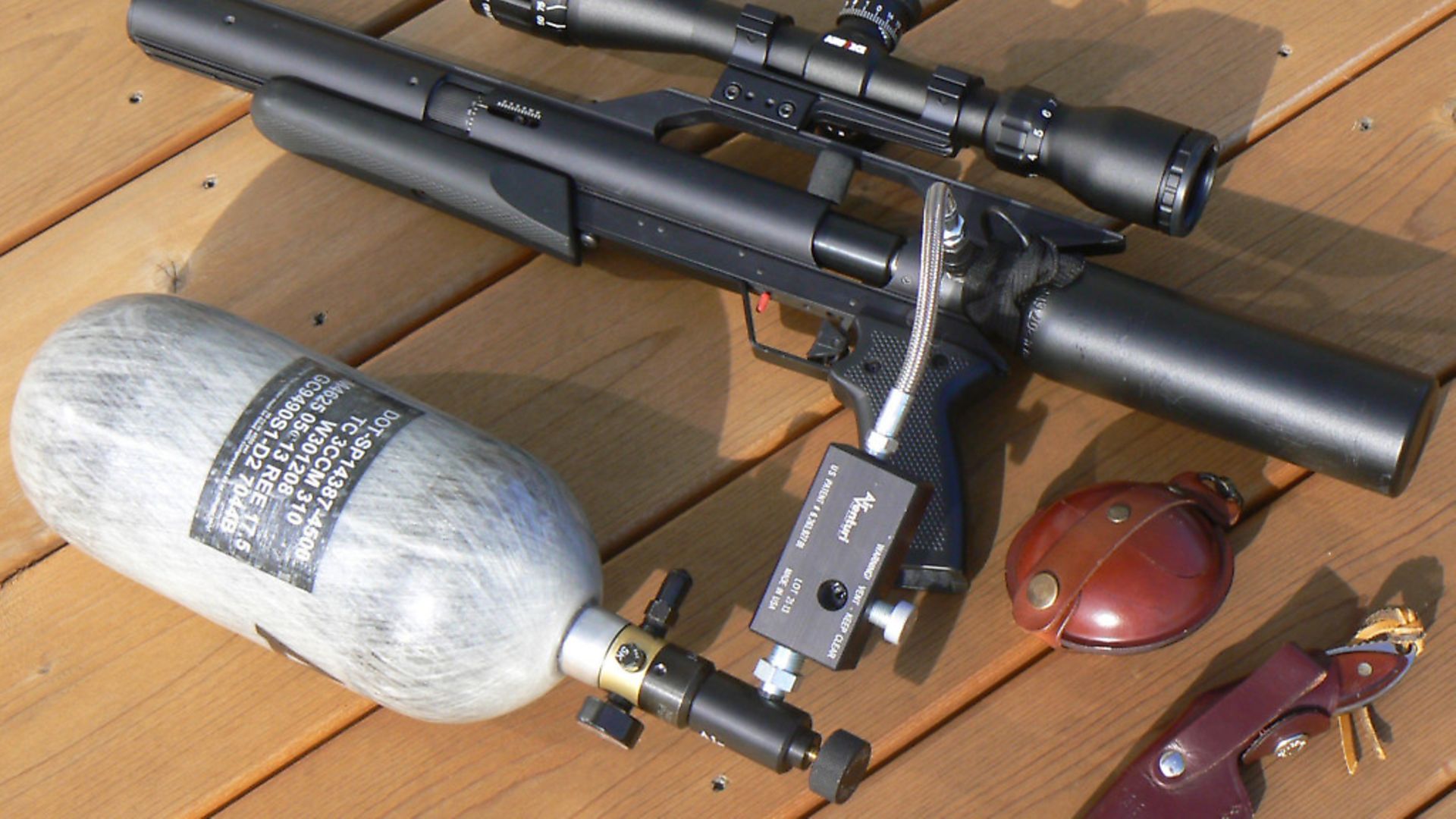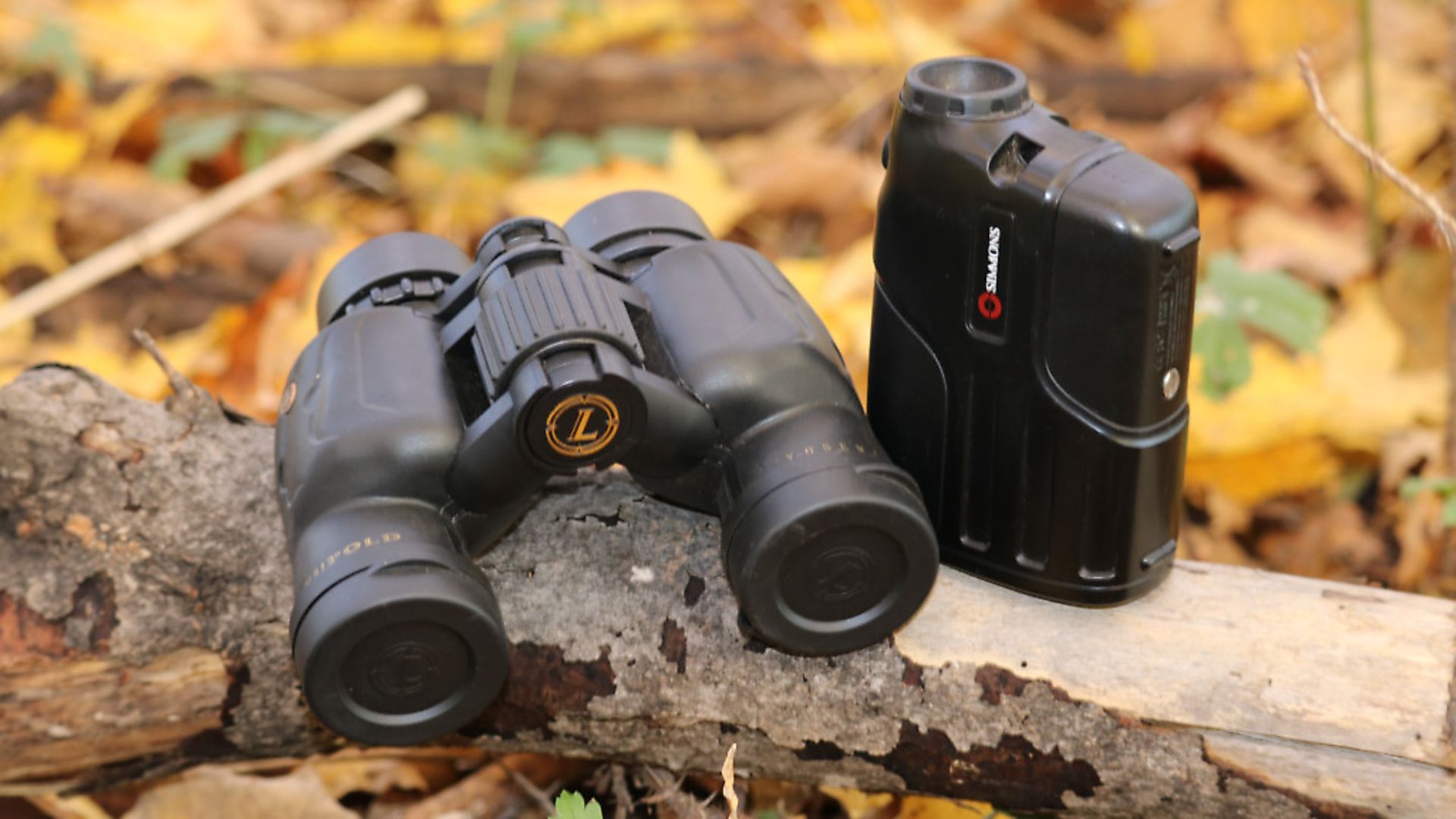Jim Chapman shows us the gear that he knows works
 credit: Archant
credit: Archant
This month, I’d like talk about some of the gear I use when hunting. This list could get very long because I hunt a variety of species, in diverse terrains, under a wide range of weather conditions.
When it comes to small-game rifles, the Brocock Compatto is a great example of the features and attributes that I look for; the first two requirements are accuracy and power, of which accuracy is the most important. If I can shoot a 3/4” 50-yard groups off sticks, but start to see outliers at 60 yards, then 50 yards is my maximum hunting range for that gun/pellet combination.
Shooting in the States gives a somewhat different perspective on the question of power. In the UK where you must deal with power restrictions and obtaining an FAC, the merit of FAC vs legal limit power is a valid discussion. In the absence of regulatory hurdles, we look for the best combination of accuracy and power. Outside of some specialty applications, such as shooting inside of buildings, there isn’t really another compelling reason to limit power.
What I want
Other features I prefer in my hunting rifles are; multi-shot magazines, side-lever action, a crisp (adjustable) trigger set at about 3lbs, a compact and lightweight design, and a sling system that is comfortable and makes the gun quickly accessible. I’ll pack a replaceable air cylinder or a small tank when I think a refill might be needed, I like to carry a couple of loaded magazines, and extra pellets are carried in a small aluminum box that protects and makes them accessible.
 credit: Archant
credit: Archant
I generally opt for scopes with moderate magnification; a 3-9 x 40 scope built on a 1” tube has worked well for me. I don’t need more magnification than 9x when shooting small game at 50-100 yards, and often carry my rifles over very long distances in some harsh terrain. Why carry the extra weight when it’s not going to be used? The other point for me is psychological; at higher magnifications, the apparent motion/jitter is a detriment for me.
With respect to clothing, I have reached the conclusion that for many hunting applications camouflage is exceedingly useful, and at the very least I’d suggest earth-toned trousers, camo shirt, hat, with face mask and gloves. When wearing camo, I try to match the environment, which sounds obvious, but presents some challenges when you hunt as many places as I do. One solution I’ve found are lightweight camo coveralls in a variety of patterns, from desert, to forest, to snow. I can pack several sets in a very small space, and pull them over my jeans once I get onsite, allowing me to match the local colour.
3D
A couple of years back, I started packing a 3D Leafy Poncho, which I’ve used all over the country, as well as Africa. This is as close to a wearable blind as you’ll find, and I’ve also used it to construct a makeshift blind on more than one occasion. For hot weather clothing, I use my fishing and back-packing technical clothing in natural colors. The advantage of these for desert and plains hunting is that they have built in UV sun protection, they are vented, which permits optimised airflow, and they breathe and dry out quickly.
Boots can make or break a trip with respect to comfort, too heavy or too light, too much or too little insulation, not the right amount of support for the conditions, can have a big impact on your well-being in the field. In the cold, northern forests with lots of snow on the ground, my heavily insulated, high-profile boots will keep my feet warm and dry. In the arid scrub of Texas, I want something light and breathable, but I also need support for my ankles whilst climbing through rock formations, as well as protection from cactus thorns and rattlesnakes. For this environment, I will often opt for ankle-high boots coupled with knee-high snake guards.
 credit: Archant
credit: Archant
Packs are an essential gear component that I carefully match to the expected conditions. I make it a rule not to carry more weight than necessary, so if the plan is for a long hike and all my gear fits into a small pack, that’s what I’ll use, but with the same amount of gear where long-distance hiking isn’t required, my preference is for an over-the-shoulder messenger bag. Messenger bags are not as comfortable over the long haul, but they allow easy access to packed gear without having to dismount the bag or unsling my rifle. A more substantial pack comes out when I need space for larger volumes of hunting gear.
What can you see?
Optics are another item often overlooked by airgun hunters. Many think that since we are hunting at closer ranges, we don’t need binoculars, but I find them useful for spotting quarry from a long way off, which allows me to plan a stealthy approach. Additionally, no matter how great your eyesight is, you will pick up more partially hidden quarry whilst ‘glassing’ than you will with the naked eye.
Another item of gear often overlooked is a rangefinder. No matter how good you believe your natural range estimating abilities to be, they are not as good as you think! The difficulty is greater at longer ranges, and when shooting prairie dogs at 40-100 yards it is a must-have item of gear. The trajectories we airgunners deal with, coupled with the difficulty of making accurate range estimation over small increments in distance, would argue for this device be included in your pack.
The most important aspect of field-shooting is accuracy. Once you’ve established the rifle has the intrinsic accuracy to do what is required, you must ensure that you can keep up your end. I am a decent off-hand shot, but to hit the kill zone of a small game animal consistently at 50 or more yards, some manner of rest is required. For this reason, shooting sticks are another essential component of my hunting kit. I currently favour the Primos Pole Cat shooting sticks, which work well when sitting or kneeling, are very fast to deploy, and extremely compact and lightweight to carry.
 credit: Archant
credit: Archant
Call ‘em in
I use calls when hunting crows, turkey, and predators; the simplest and least expensive being mouth calls. These can be effective and some, such as distress calls, are easy to use, but others, such as crow and raccoon fights or predator vocalisations, are difficult to replicate and better produced with electronic calls. The other advantage is that electronic calls can be positioned away from the hunter so that attention is not to called to your hiding spot. I will often carry a mini-electronic call in my pack, when and where appropriate.
A headlamp and a small flashlight are always in my pack because I am often out well before daybreak and after sunset. These lights can be fitted with red filters to avoid spooking game as I move in the field. Additionally, in jurisdictions where it is legal to hunt at night with lights, I will pack a high-power light that mounts to my scope, or to an accessory mount on my rifle. Recently, I have been using a thermal monocular for night hunting, and add them to my pack when I’ll be out after the sun sets.
For a long time I looked for a good way to carry small game after harvesting it. When I slipped rabbits or squirrels into my game bag or pack, I ended up with a real mess and the solution I finally arrived at was using a game carrier of the type employed by waterfowl hunters. Several lengths of webbing with a ring affixed at either end, and joined at the mid-point, can be formed into a loop and slipped over the heads of virtually any small game animal you’d like to haul back to camp.
To process small game I pack a dressing kit that contains a small narrow blade knife, a larger skinning knife, sharpening stone, plastic bags, and some cleansing wipes. These are the basics, although I’ll add a camping knife, a hatchet, a gut hook, and spreaders and a hoist for bigger game.
Of course, the gear you select to pack for your hunts will be dictated by the game and environment. Whilst it is completely possible to grab your favourite air rifle and a handful of pellets for a great day of hunting, having the gear you need when its needed will improve results and make you more efficient, effective, and comfortable in the field.